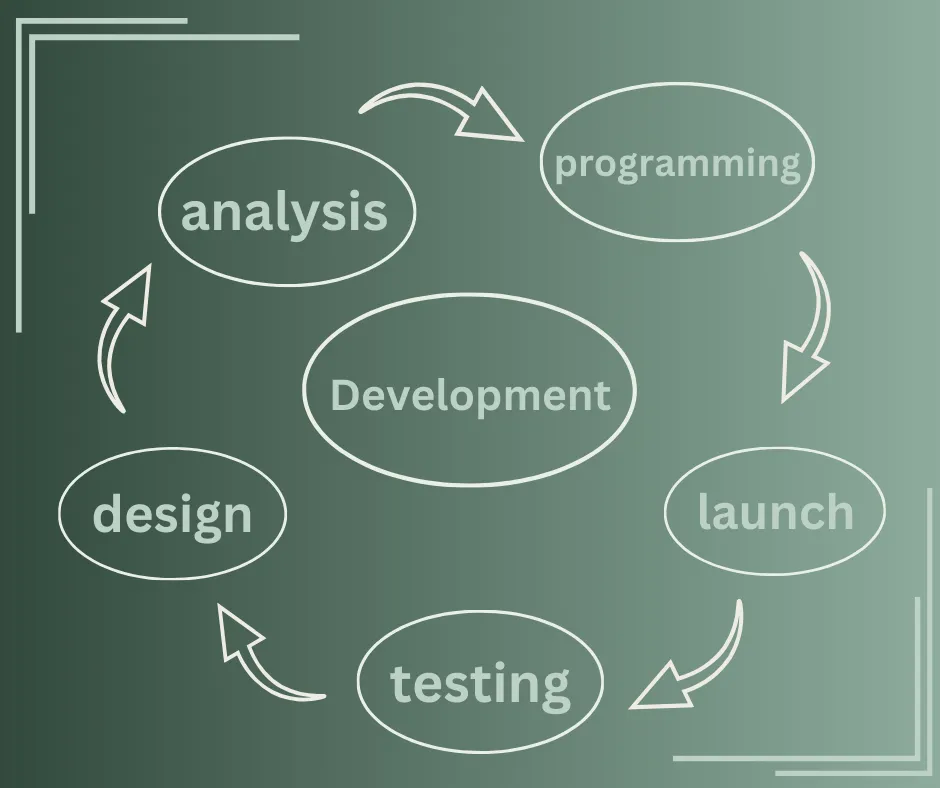The Importance of Web and Mobile Applications in the Digital Age
In the current digital age, web and mobile applications have become indispensable tools for simplifying our daily lives and boosting business success. Whether you are a user or a business owner, these applications offer innovative and fast ways to communicate, sell, and manage time.

Let’s Explore the Concept of Web and Mobile Applications
v Mobile Applications:
They put the world in your pocket! From shopping to task management and even entertainment, everything becomes easier and faster through your smartphone.
v Web Applications:
They work through any browser, meaning you can access your data and manage your business from any internet-connected device without needing to download anything.
Thanks to these applications, businesses can improve customer service, increase efficiency, and reach a larger audience, while users benefit from a seamless and convenient experience.

Differences between Web and Mobile Applications
There are several key differences between web and mobile applications, and here are the most notable:
v Platform:
Web Applications:
Operate through a browser on any internet-connected device, such as a computer or phone. They do not require downloading or installation.
Mobile Applications:
These are tailored specifically for mobile operating systems like iOS and Android. They need to be downloaded from stores like the App Store or Google Play.
v Accessibility:
Web Applications:
Accessible via any browser through a web link.
Mobile Applications:
Require the app to be downloaded and installed on a smartphone.
v Performance:
Web Applications:
Depend on an internet connection, so performance may be slower compared to mobile apps.
Mobile Applications:
Typically faster, as they can take advantage of device capabilities such as the processor, camera, and memory.
v Updates:
Web Applications:
Updates are automatic on the server side, with no need for user action.
Mobile Applications:
Require users to download updates from official app stores.
v Capabilities:
Web Applications:
Limited access to device features like the camera, GPS, and notifications.
Mobile Applications:
Have full access to device features such as sensors, push notifications, and more.
v Cost:
Web Applications:
Cheaper and faster to develop, as they run on a single browser and don’t need adaptation for multiple platforms.
Mobile Applications:
More expensive to develop, as they require design and programming for each platform (Android and iOS).
v Offline Usage:
Web Applications:
Require an internet connection to function properly.
Mobile Applications:
Can work offline if designed to do so.
These differences highlight that each type is suited for specific purposes, and the best choice depends on your needs and goals.

Principles of Good Design in Web and Mobile Applications
To ensure high-quality web and mobile app design that resonates well with customers, a set of principles should be followed. These principles strike a balance between professionalism and ease of use, enhancing customer satisfaction and trust in the application. Here are the key principles that contribute to delivering a standout experience:
v Simplicity:
Design a simple and easy-to-use interface, avoiding unnecessary complexities.
Focus on the essential elements and minimize details that might overwhelm the user.
v Consistency:
Ensure a smooth experience by keeping elements like buttons and menus consistent throughout the app to create a familiar environment for the user.
Maintain a unified visual language that reinforces the app’s identity and branding.
v Responsiveness and Performance:
Ensure fast loading and seamless navigation.
Optimize performance, especially on smartphones, to minimize waiting times.
v Control and Feedback:
Provide users with information about the status of the application or processes (such as a loading bar or instant messages).
Offer clear messages when errors occur or to confirm successful operations.
v Responsiveness to Different Devices:
Design a responsive interface that adapts to different screen sizes (phones, tablets, and computers).
Ensure easy access and usability of the application regardless of the type of device.
v User-Centric Approach:
Understand user needs and design the application to meet those needs.
Use intuitive and straightforward workflows to achieve goals.
v Accessibility:
Ensure the application is accessible and usable by all groups, including people with disabilities.
Adopt known accessibility standards, such as appropriate text sizes and good colour contrast.
v Security and Privacy:
Protect user data by implementing strong security measures.
Clearly present privacy policies and adhere to them.
By following these principles, you will not only achieve a functional app design but also create a user experience characterized by elegance and ease, building a long-term relationship with customers.

The Concept of App Development
App development is an exciting journey that begins with a simple idea and ends with an app in users' hands that delights them. It transforms your ideas into a digital reality through:
v Requirements Analysis:
Understanding the goals and needed functionalities.
v Creative Design:
Making app interfaces attractive and easy to use.
Advanced Programming: Using the latest technologies to ensure optimal performance.
v Continuous Testing:
Ensuring a flawless user experience.
v Launch and Support:
Deploying the app and providing regular updates.
At Web Landscape, we are here to accompany you every step of the way, even after the app launch. Our goal is to help you with web and mobile app development services to deliver an app that impresses your customers and makes their lives easier.
Conclusion
In today's digital age, web and mobile applications have become an integral part of our daily lives, offering innovative solutions that help us communicate, shop, learn, and work more efficiently. With the increasing reliance on technology, understanding the differences between web and mobile applications and the principles of their design has become crucial to ensuring the success of any digital project.



